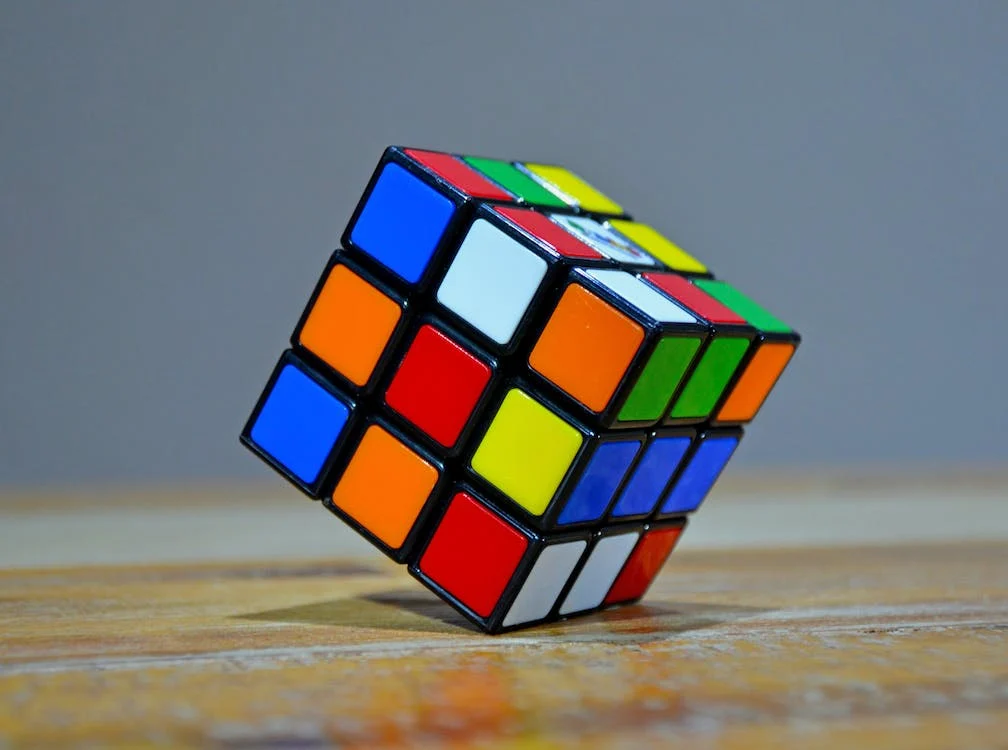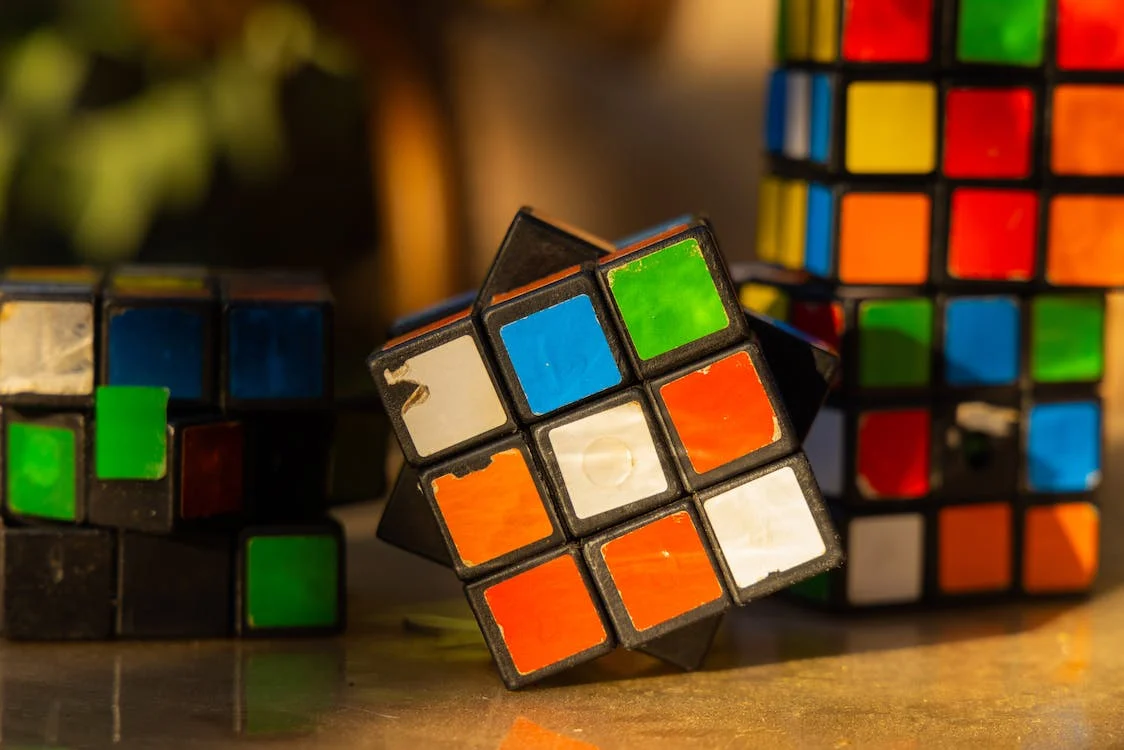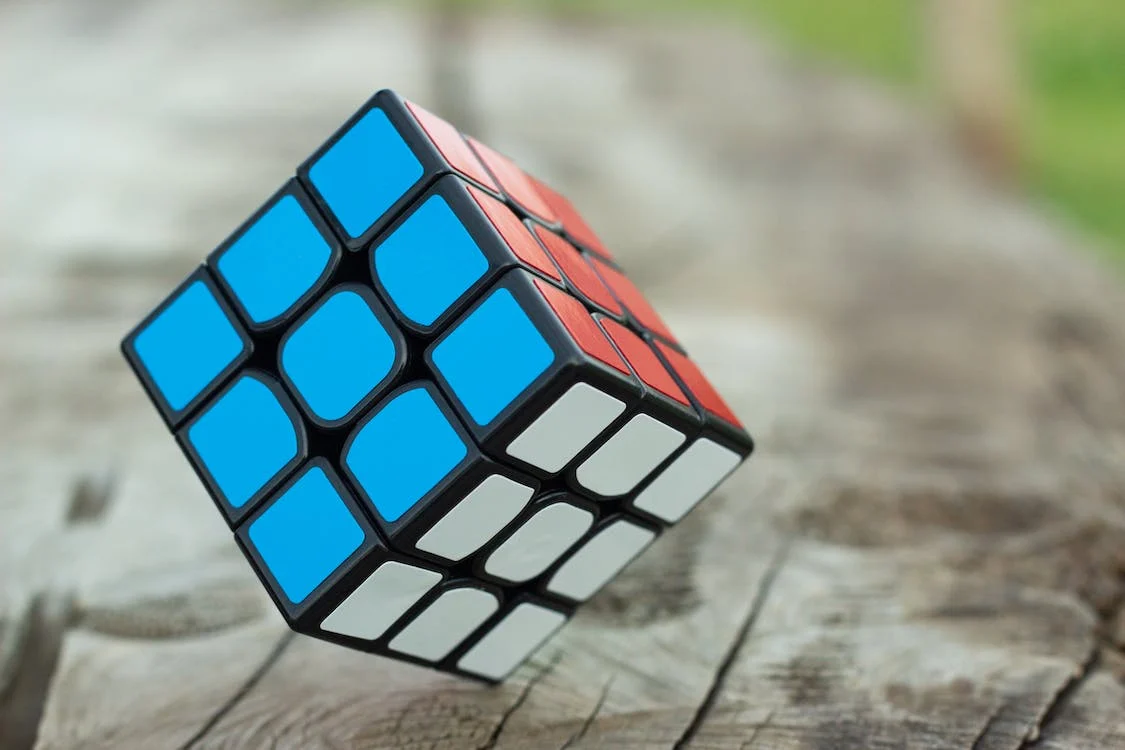The Rubik’s Cube is considered by many toy enthusiasts and collectors as a timeless toy, as it remains popular even decades after it was originally released in 1977 (as the Hungarian Magic Cube). While many people know about the Rubik’s Cube and have played one before, there are only a few that actually know the origins of the toy, particularly who invented the toy and how it came to be. To know more about this iconic puzzle toy, here is the fascinating history of the Rubik’s Cube.
The Precursor of the Rubik’s Cube
Before the creation of the Rubik’s Cube, there were already similar puzzles or toys that were developed. One of these puzzles was created by toy designer Larry D. Nichols, who created a 2x2x2 “Puzzle with Pieces Rotatable in Groups” in March 1970. Nichols filed a patent application for his invention in Canada. Unlike the Rubik’s cube which was held together firmly by a plastic core with hinges, Nichols’s cube features pieces that are held together by magnets. Nichols was granted the patent for his puzzle cube on April 11, 1972, which was just two years before the creation of Rubik’s Cube. [1]
The Origins of the Rubik’s Cube
The Rubik’s Cube was invented by Ernő Rubik, a sculptor and professor of architecture that was born on July 13, 1944, in Budapest Hungary. In the 1970s, Rubik was working at the Department of Interior Design at the Academy of Applied Arts and Crafts in Budapest. During his tenure at the said department, he designed a teaching tool in 1974 that can help students have a better understanding of 3D objects. This teaching tool can also make students learn about solving structural problems of moving parts that can move on their own without making the mechanism that holds those parts together fall apart. [2]
Ernő Rubik didn’t intend to create a puzzle, as he developed the cube as a tool that is only used for teaching. However, when he jumbled up the positions of each part and struggled to put the parts back in their original place, he realized that he just created a complex puzzle toy. Rubik later applied for a patent for his invention, which he called “Magic Cube,” on January 30, 1975. The patent was granted later in the same year.
Selling the First Batches of the Rubik’s Cube
The first batches of Rubik’s “Magic Cube” were produced in 1977 and were sold in toy shops in Budapest, Hungary. A businessman named Tibor Laczi presented a Magic Cube (with Rubik’s permission) at the Nuremberg Toy Fair in February 1979 in Germany. From there, the Magic Cube would become quite popular in Germany and other neighboring countries.
The Magic Cube would later be noticed by Tom Kremer, the founder of the toy company Seven Towns. [2] With the help of Kremer, Rubik was able to sign a deal with another toy company called Ideal Toys in September 1979. The deal would allow Rubik to sell his Magic Cube in different countries around the world. However, Ideal Toys did not like the name “Magic Cube,” as they thought that it was too generic. So, the company decided on naming the toy after its inventor, so the name “Rubik’s Cube” was born.
The 1980s Rubik’s Cube Craze
The worldwide release of Ideal Toys’ Rubik’s Cube occurred in 1980. Although the Rubik’s Cube sold well during its first few months of production, Ideal Toys wanted to bump up the toy’s sales by initiating a television advertising campaign in the middle of 1980. By the end of the said year, Rubik’s Cube won the German Game of the Year Award while also winning similar awards in other countries like the US, the UK, and France.
In just one year after its release, the Rubik’s Cube created a worldwide craze where people are competing on who can solve the cube the fastest. Between 1980 and 1983, there were more than 200 million Rubik’s Cubes that were sold worldwide, making the toy one of the most successful and profitable toys in the 1980s.
In March 1981, a speedcubing championship was organized by the Guinness Book of World Records in Munich, Germany. Speedcubing is an activity or sport wherein people compete on who will be able to solve Rubik’s Cubes the fastest.
It was also due to the craze that various books about solving the Rubik’s Cube were published. Two of these books are Patrick Bossert’s You Can Do the Cube in 1981 and mathematician David Singmaster’s Notes on Rubik’s “Magic Cube” in 1980. In 1981, the three best-selling books in the US are the ones that are about solving the Rubik’s Cube. The best-selling book of that year was The Simple Solution to Rubik’s Cube, which was written by James G. Nourse. This particular book sold more than 6 million copies in just one year.
Due to the popularity of the Rubik’s Cube among kids, Ideal Toys decided to license the Rubik’s Cube brand to a production company called Ruby-Spears Enterprises so that they can create an animated TV show. The TV show produced for the Rubik’s Cube was “Rubik, the Amazing Cube,” a Saturday morning animated series that first aired on September 10, 1983. [2] The show’s original run lasted until December 10, 1983, although reruns of the show were aired until September 1, 1984.
By 1983, it was reported that the craze for the Rubik’s Cube had died down, as sales for the puzzle toy plummeted by the end of the said year. However, the craze just died in the United States, as other countries still experienced the craze until the late 1980s, mainly because of the high demand and the low supply of Rubik’s Cubes in those countries.
The Revival of the Rubik’s Cube Craze
While the Rubik’s Cube craze died quickly in the United States during the 1980s, the sales for the toy have been quite high for many years due to the simple fact that the toy is fun to play with. By the 2000s, the interest in the Rubik’s Cube began to increase once again, and this led to the revival of the Rubik’s Cube craze. The sales of the toy doubled between 2001 and 2003.
It was also in 2003 when the World Rubik’s Games Championship was held, and this was the first speedcubing tournament since 1982. Since then, speedcubing competitions have been alive in different countries around the world, and world records for the fastest time for cube-solving were broken almost every year. By 2008, the Rubik’s Cube and its variants sold more than 15 million worldwide.
Unfortunately, the patent for the Rubik’s Cube expired in 2000, which led other companies (especially the toy companies from China) to develop and produce their own versions of the Rubik’s Cube. However, it can also be said that the expiration of the patent benefitted the Rubik’s Cube, as the puzzle became more accessible and abundant by the early 2000s.
There have been different versions of the puzzle toy that has been released over the years besides the Classic Rubik’s Cube. Here are some of the best variants of the Rubik’s Cube that you can purchase online and in select toy stores:
- Rubik’s Master – the official 4x4x4 Rubik’s Cube puzzle that is much harder to solve than the classic cube.
- Rubik’s Crystal – a crystallized version of the Rubik’s Cube that has transparent and translucent parts.
- Rubik’s Phantom – this special variant of the Rubik’s Cube may look all-black at first, but it features thermochromic technology that enables you to see the true colors of each piece of the puzzle by simply applying the heat of your touch.
- Rubik’s Re-Cube – a Rubik’s Cube that is made from 100% recycled plastic.
- Rubik’s Impossible – this puzzle cube features iridescent tiles that change colors when viewed from different angles, thus making the puzzle almost impossible to solve.
These are everything you need to know about the history of the Rubik’s Cube, from when it was made to how its craze was revived in the 2000s. Today, the Rubik’s Cube remains a popular toy due to how fun it is to play with and solve. If you haven’t tried playing a Rubik’s Cube, now may be the time for you to do so.
References
[1] Grabarchuk, S. (2009, July 5). Larry D. Nichols. Age of Puzzles. Retrieved July 4, 2023, from http://www.ageofpuzzles.com/Masters/LarryDNichols/LarryDNichols.htm
[2] Reese, H. (2020, September 25). A Brief History of the Rubik’s Cube. Smithsonian Magazine. Retrieved July 4, 2023, from https://www.smithsonianmag.com/innovation/brief-history-rubiks-cube-180975911/




